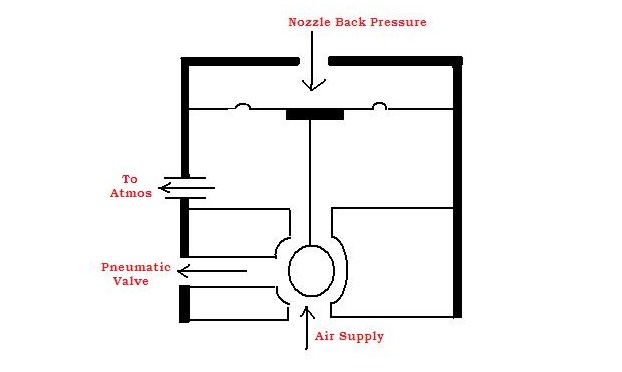The reverse acting relay is mainly consists of a metal diaphragm.
The diaphragm is connected to the rod.
The rod is connected to the ball.
The air supply is given to the ball from the downward side of the relay.
Reverse Acting Relay Principle

WORKING
In reverse acting relay the output is indirectly proportional to the input. Means if the input increases the output decreases and if the input decreases the output increases.
When the nozzle back pressure increases above the set point value, the metal diaphragm moves towards the downward side. As the diaphragm is connected to the ball, the ball also moves towards the down side.
The air supply is given to the ball from the bottom side of the relay. Therefore the air is restricted by the nozzle back pressure. Due to this action the air moves to the atmosphere. So the output pressure is decreases and controls to near the set point value.
When the nozzle back pressure is decreases, the metal diaphragm moves towards the upper side. The ball which is connected to the diaphragm is also moves towards the upper side.
The air supply is given to the ball from the bottom side of the relay. Because of decreases in pressure the air does not restricted and the output pressure increases.
Author: Laxmi Omprakash Singh